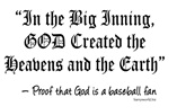
Bunning was selected by the veterans committee just 5 years after his last eligible year. Bunning was dominant in his early years with Detroit, but was even better in his time in Philadelphia. Looking at his career, it is better to look at his best seasons rather than his total statistics. In his final 4 seasons, Bunning was just 32-51, something that hurt his overall career winning percentage. Prior to that, he was a more respectable 192-133. His winning percentage at that point was .590 and it dropped to .549 when he retired after the 1971 season. Would he have been in the Hall sooner if he retired after 1967, when he went 17-15, 2.29 and led the NL with 253 strikeouts? Possible but unlikely as it was quite known that Bunning was second on the all time strikeout list when he retired, trailing just Walter Johnson.
The problem Bunning ran into was the generation in which he pitched. He pitched the same time as Hall of Famers Sandy Koufax, Don Drysdale, Juan Marichal and Bob Gibson. However, those and others did not leave Bunning in the dust when it came to talk about the game's best pitchers. In his time in Detroit, he was 118-87, leading the AL in strikeouts in 1959 and 1960 and approaching 200 Ks several times. He won 20 games in 1957 and 19 in 1962. He threw a no hitter in 1958 and made the AL All Star team 5 times wearing a Tigers uniform.
His best seasons came after he was traded to the Philadelphia Phillies after the 1963 season. He won 19 games in 1964, 1965 and 1966 and finished 1967 with 17 wins. During those 4 seasons, he had his 4 highest IP seasons and 4 highest strikeout seasons. Prior to joining Philadelphia, his lowest ERA was 2.69 in 1957. All 4 of his seasons in Philadelphia, he managed to keep his ERA lower than 2.69. Like I said earlier, he did not stand out as much due to the before mentioned pitchers he pitched with in the NL at that time.
He was traded to the Pittsburgh Pirates before the 1968 season. 1968 was known as the year of the pitcher. Gibson had the historic 1.12 ERA and Denny McLain went 31-6 that season. Bunning was coming off his best season as he finished 2nd in the Cy Young in 1967. He was 17-15, but led the NL in 6 pitching catagories including strikeouts, shutouts and innings (as well as starts, batters faced and hit batters). Bunning managed to finish 1968 4-14, 3.88 with 95 Ks in 160 innings as he made just 28 starts. This was the beginning of the run I mentioned earlier where he finished his career 19 games under .500 in his last 4 seasons with Pittsburgh, Los Angeles and Philadelphia.
Bunning was good, but looking at his numbers makes more of a case for Jack Morris to get a look at the Hall. I still think Morris falls short, with the biggest turnoff being his career 3.90 ERA. Morris was dominant in the 1984 and 1991 postseasons, going 7-0 while Bunning never pitched a postseason game. Morris finished with a higher winning percentage (.577-.549) and won 30 more career games. Morris also pitched more complete games (175-151) in an era where complete games were starting to get phased out. Bunning had the advantage in shutouts, no hitters and strikeouts. I am open for the argument, but I do not see a distinct winner either way if you want to compare stats as to who was the better pitcher. I think if Bunning is a Hall of Famer (which I am not here to discredit), Morris should get more consideration. Even if it is after next year's election when Morris is no longer eligible.

 RSS Feed
RSS Feed
